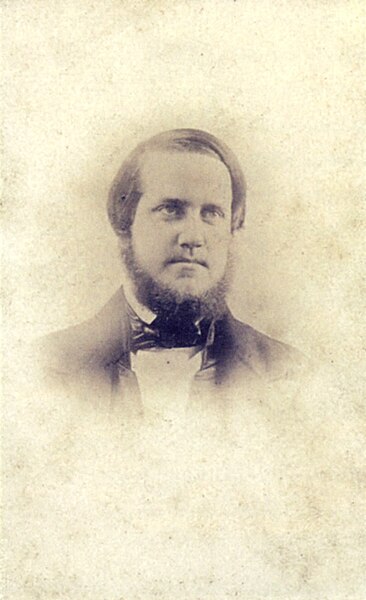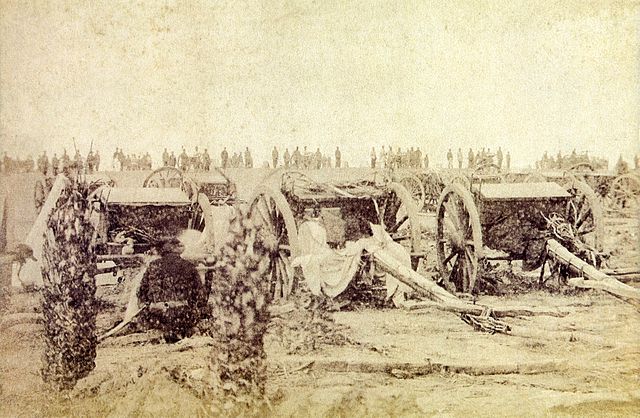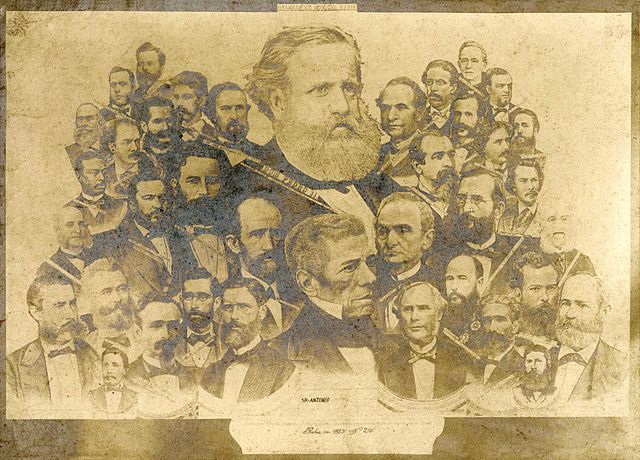Dom Pedro II, nicknamed the Magnanimous, was the second and last monarch of the Empire of Brazil, reigning for over 58 years.
Photograph by Mathew Brady, c. 1876
Pedro II at age 12 wearing court dress and the Order of the Golden Fleece, 1838
Pedro II at age 20 wearing court dress, 1846
Pedro II around age 22, c. 1848. This is the earliest surviving photograph of the Emperor
The Empire of Brazil was a 19th-century state that broadly comprised the territories which form modern Brazil and Uruguay until the latter achieved independence in 1828. Its government was a representative parliamentary constitutional monarchy under the rule of Emperors Pedro I and his son Pedro II. A colony of the Kingdom of Portugal, Brazil became the seat of the Portuguese Empire in 1808, when the Portuguese Prince regent, later King Dom John VI, fled from Napoleon's invasion of Portugal and established himself and his government in the Brazilian city of Rio de Janeiro. John VI later returned to Portugal, leaving his eldest son and heir-apparent, Pedro, to rule the Kingdom of Brazil as regent. On 7 September 1822, Pedro declared the independence of Brazil and, after waging a successful war against his father's kingdom, was acclaimed on 12 October as Pedro I, the first Emperor of Brazil. The new country was huge, sparsely populated, and ethnically diverse.

A locomotive in Bahia province (Brazilian northeast), c. 1859
Brazilian artillery in position during the Paraguayan War, 1866
Emperor Pedro II surrounded by prominent politicians and national figures c. 1875
Belém, a medium-sized city and capital of Pará province (Brazilian north), 1889








